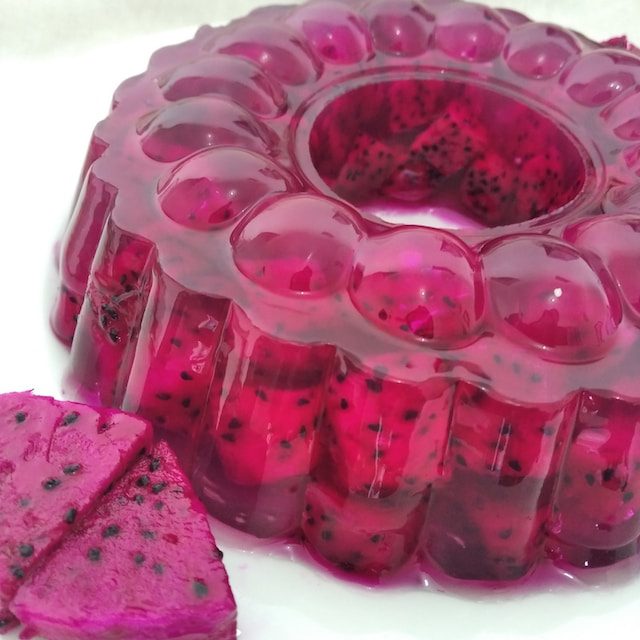
As an Amazon Associate I earn from qualifying purchases.
When it comes to natural remedies for weight loss and overall well-being, konjac root has gained significant attention. Konjac root, also known as Amorphophallus konjac, is a plant native to Asia and is widely used for its health benefits. In this comprehensive guide, we will explore the optimal times to take konjac root, its benefits, potential side effects, and frequently asked questions surrounding its usage.
What Is Konjac Root?
Konjac root, derived from the Amorphophallus konjac plant, is a water-soluble dietary fibre that has been used for centuries in traditional Asian medicine. It is known for its high glucomannan content, a type of soluble keto fibre that absorbs water to form a gel-like substance in the digestive system.
The konjac root is commonly used in the production of konjac flour, konjac noodles, and dietary supplements. It is also available in the form of capsules or powder.
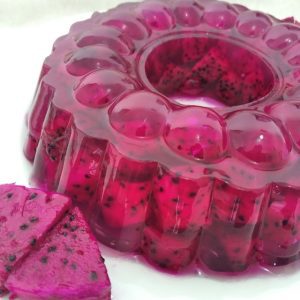
When to take konjac jelly
The Benefits of Konjac Root
Konjac root offers several potential benefits for overall health and well-being. Here are some of its notable advantages:
- Weight Management: Konjac root is often used as a natural weight loss aid due to its high fibre content. When consumed, it expands in the stomach, promoting a feeling of fullness and reducing appetite. This can help in managing portion control and preventing overeating.
- Digestive Health: The soluble fibre in konjac root acts as a prebiotic, providing nourishment for beneficial gut bacteria. This promotes a healthy digestive system, aids in regular bowel movements, and may alleviate constipation.
- Blood Sugar Control: Konjac root may help regulate blood sugar levels by slowing down the absorption of glucose in the intestines. This can be particularly beneficial for individuals with diabetes or those at risk of developing the condition.
- Cholesterol Management: The soluble fibre in konjac root has been found to reduce LDL cholesterol levels, often referred to as "bad" cholesterol. By lowering cholesterol levels, konjac root may help reduce the risk of heart disease.
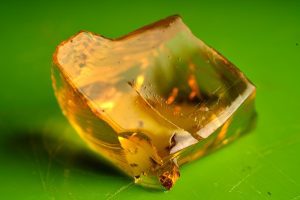
what is konjac root for
When to Take Konjac Root for Weight Loss
If you're considering using konjac root for weight loss, timing your intake is important for optimal results. Here are a few suggestions on when to take konjac root:
- Before Meals: Taking konjac root supplements around 30 minutes before meals can help you feel fuller and reduce your calorie intake. The glucomannan in konjac root expands in the stomach, providing a sense of satiety and aiding in portion control.
- Between Meals: Konjac root can also be consumed as a healthy snack between meals. This can help curb cravings and prevent overeating during regular meal times.
- As Part of a Balanced Diet: Incorporating konjac root into a well-balanced diet can contribute to long-term weight management. Combining its consumption with regular exercise and healthy lifestyle habits can enhance its effectiveness.
Remember to follow the recommended dosage instructions provided by the manufacturer or consult with a healthcare professional for personalized guidance.
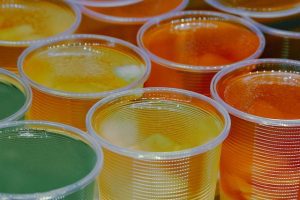
when to take konjac jelly (2)
How to Take Konjac Root Supplements
Konjac root supplements are available in various forms, including capsules, tablets, and powder. Here's a guide on how to take konjac root supplements effectively:
- Capsules or Tablets: Follow the dosage instructions provided by the manufacturer. Typically, it is recommended to take konjac root capsules or tablets with a full glass of water to ensure proper hydration.
- Powder: If you prefer using konjac root powder, mix the recommended amount with water or a non-acidic beverage. Stir well to dissolve any lumps before consumption.
It's important to note that konjac root absorbs water, so it's crucial to drink plenty of fluids when taking konjac root supplements to prevent dehydration.
Is Konjac Root Safe?
Konjac root is generally considered safe for consumption when taken as directed. However, it's essential to be aware of potential side effects and take precautions. Here are some important points to consider:
- Choking Hazard: Since konjac root expands when exposed to water, it is vital to take konjac root supplements with sufficient water to prevent the risk of choking or gastrointestinal blockage.
- Allergies: Individuals with a known allergy to konjac or any of its components should avoid using konjac root supplements.
- Medication Interactions: If you are taking any medications, it's advisable to consult with a healthcare professional before incorporating konjac root into your routine. Konjac root may interact with certain medications, potentially affecting their absorption or efficacy.
If you experience any adverse reactions or discomfort after taking konjac root, discontinue use and seek medical advice.
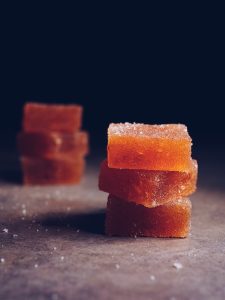
how to take konjac root
FAQs about Konjac Root
In this section, we will address some frequently asked questions (FAQs) about konjac root and its popular derivative, konjac flour. These FAQs will provide you with valuable insights into the safety, potential benefits, and usage considerations of konjac root and konjac flour. Whether you're curious about its compatibility with medications, its impact on diabetes management, or its effectiveness in aiding digestion, we have the answers you need to make informed decisions about incorporating konjac root and konjac flour into your wellness routine.
Can I take konjac root with other medications?
It is recommended to consult with a healthcare professional before taking konjac root alongside other medications. Some medications may interact with konjac root, potentially affecting their absorption or effectiveness. A healthcare professional can provide personalized advice based on your specific medical condition and medication regimen.
Is konjac root suitable for individuals with diabetes?
Konjac root can be beneficial for individuals with diabetes. Its high fibre content and ability to slow down glucose absorption in the intestines may help regulate blood sugar levels. However, it's essential to consult with a healthcare professional before incorporating konjac root into your diabetes management plan to ensure it aligns with your overall treatment strategy.
How long does it take for konjac root to show results?
The time it takes for konjac root to show results may vary depending on individual factors such as metabolism, lifestyle, and dosage. However, some individuals may notice the effects of konjac root, such as increased satiety and improved bowel movements, within a few days to a week of regular usage. Consistency and adherence to a healthy lifestyle are key to achieving sustainable results.
Can konjac root help with digestive issues?
Yes, konjac root can help with digestive issues. The soluble fibre in konjac root acts as a prebiotic, providing nourishment for beneficial gut bacteria. This promotes a healthy gut environment and may alleviate digestive issues such as constipation and irregular bowel movements. However, if you have a pre-existing digestive condition, it's advisable to consult with a healthcare professional before using konjac root.
What are the potential side effects of konjac root?
While konjac root is generally safe for consumption, it may cause some side effects in certain individuals. These can include bloating, flatulence, diarrhoea, and abdominal discomfort. Additionally, if konjac root is not consumed with sufficient water, it can pose a choking hazard or gastrointestinal blockage. It's essential to follow the recommended dosage instructions and stay adequately hydrated when using konjac root.
Is konjac root suitable for pregnant or breastfeeding women?
Pregnant or breastfeeding women should exercise caution when considering konjac root supplementation. While there is limited research on the effects of konjac root during pregnancy or lactation, it is advisable to consult with a healthcare professional before using konjac root to ensure the safety and appropriateness of its usage.
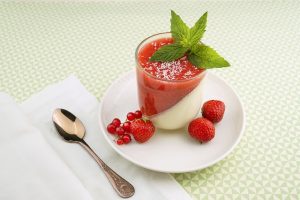
when is the best time to take konjac flour
Conclusion
Konjac root is a natural dietary fibre with numerous potential benefits, including weight management, improved digestion, blood sugar control, and cholesterol management. When taken correctly and at the right times, konjac root can be a valuable addition to a healthy lifestyle. However, it's essential to follow the recommended dosage instructions, stay hydrated, and consult with a healthcare professional when necessary.
Incorporating konjac root into your routine can support your overall well-being and contribute to your weight loss journey. Remember to prioritize a balanced diet, regular exercise, and sustainable lifestyle habits for optimal results.
When to Eat Konjac Jelly: A Comprehensive Guide for Optimal Consumption
Konjac jelly has gained popularity in recent years as a nutritious and low-calorie food option. Made from the root of the konjac plant, this jelly-like substance is not only delicious but also offers various health benefits. However, many people wonder about the best time to consume konjac jelly for maximum efficacy. In this article, we will explore when to eat konjac jelly to harness its nutritional value and support your overall well-being.
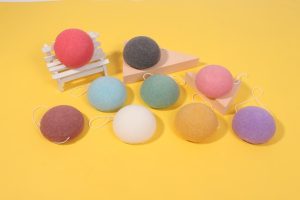
what are the benefits of konjac jelly
When to Eat Konjac Jelly: The Best Timing for Optimal Results
Are you wondering about the ideal timing for consuming konjac jelly to achieve optimal results? Look no further! In this article, we will delve into the topic of when to eat konjac jelly for maximum effectiveness. Whether you're seeking its weight management benefits, assistance with digestion, or blood sugar control, understanding the right timing can make a significant difference. Get ready to discover the best strategies for incorporating konjac jelly into your daily routine and maximizing its potential benefits.
Morning: Kickstart Your Day with Konjac Jelly
Konjac jelly can be an excellent addition to your breakfast routine. Starting your day with a nutritious konjac jelly snack can help boost your energy levels and provide a feeling of fullness that lasts throughout the morning. It's a convenient option for those with busy schedules, as it requires minimal preparation and can be consumed on the go.
Pre-Workout: Fuel Your Body with Konjac Jelly
If you're an active individual who regularly engages in physical exercise, consuming konjac jelly before your workout can be beneficial. The high fibre content in konjac jelly helps slow down the digestion process, providing a steady release of energy during your exercise routine. Additionally, konjac jelly can contribute to enhanced endurance and improved performance during physical activities.
Post-Workout: Aid in Muscle Recovery with Konjac Jelly
After an intense workout, your body requires proper nutrition for muscle recovery. Konjac jelly contains essential nutrients and amino acids that promote muscle repair and replenishment. Consuming konjac jelly post-workout can help optimize your recovery process and reduce muscle soreness.
Mid-Morning Snack: Satisfy Your Hunger with Konjac Jelly
When the mid-morning hunger strikes, reaching for a konjac jelly snack is a wise choice. Its low-calorie content and high fibre content can help curb cravings, keeping you satiated until your next meal. Moreover, konjac jelly is a healthier alternative to sugary snacks, making it an ideal choice for individuals aiming to maintain a balanced diet.
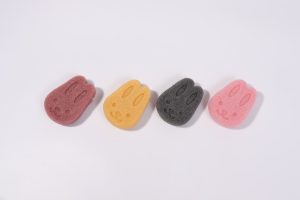
konjac jelly
Lunch: Konjac Jelly as a Healthy Side Dish
Including konjac jelly as a side dish during your lunchtime can contribute to a well-rounded meal. Its low calorie and high fibre content can help you maintain portion control and support healthy weight management. Additionally, the soluble fibre in konjac jelly aids in digestion and promotes gut health.
Afternoon Pick-Me-Up: Konjac Jelly for a Quick Boost
During the afternoon slump, when you start feeling lethargic, konjac jelly can be a convenient and nutritious pick-me-up. Its low-calorie nature ensures you get an energy boost without compromising your calorie intake. Konjac jelly's natural sweetness can also satisfy your sweet tooth without resorting to unhealthy snacks or sugary beverages.
Evening Snack: Konjac Jelly as a Light Option
If you often crave a snack in the evening, opting for konjac jelly can be an excellent choice. It provides a satisfying and guilt-free treat while keeping your calorie intake in check. Konjac jelly's high fibre content helps promote a feeling of fullness, preventing excessive late-night snacking.
Before Bed: Konjac Jelly for Controlled Late-Night Cravings
For individuals who struggle with late-night cravings, consuming konjac jelly before bed can help control those impulses. Its low-calorie content and high fibre content make it a suitable option for satisfying hunger while still adhering to a healthy eating routine.
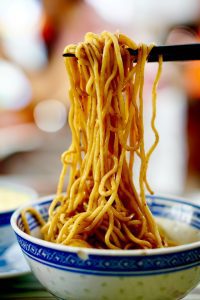
what can you make with konjac root
What is Konjac Jelly Made out of?
Konjac jelly, a popular food product in various Asian cuisines, is made from the root of the konjac plant. This unique ingredient has gained attention not only for its distinctive texture but also for its potential health benefits. In this article, we will explore what konjac jelly is made out of and shed light on its nutritional value.
The Konjac Plant: A Source of Konjac Jelly
Konjac jelly is derived from the konjac plant, scientifically known as Amorphophallus konjac. Native to Southeast Asia, this perennial plant thrives in warm and subtropical regions. The konjac plant features a starchy corm, which is an underground tuber used as a food source. It is from this corm that konjac jelly is extracted.
Konjac Jelly Production Process
The production of konjac jelly involves several steps to transform the konjac plant's corm into the jelly-like substance enjoyed in various culinary preparations. Here's an overview of the process:
- Harvesting the Corm: The first step involves carefully digging up the konjac plant's corm. The corm is then thoroughly cleaned to remove any impurities.
- Drying and Grinding: Once cleaned, the corm is sliced into small pieces and dried. This drying process reduces the moisture content and prepares the corm for grinding. After drying, the konjac corm is finely ground into a powder.
- Mixing and Filtering: The konjac powder is mixed with water to create a slurry. This slurry is then passed through filters to remove any remaining impurities.
- Gelling and Cooling: The filtered slurry is heated to promote gelation. Once the desired consistency is achieved, the konjac jelly is cooled to solidify and set.
- Cutting and Packaging: Finally, the konjac jelly is cut into desired shapes, typically cubes or noodles. These are then packaged and made available for consumption.
Nutritional Value of Konjac Jelly
Konjac jelly is renowned for its low-calorie content and high fibre content, making it a favourable choice for those seeking a healthy alternative to traditional gelatine-based sweets. Here are some key nutritional aspects of konjac jelly:
- Low Calorie: Konjac jelly is exceptionally low in calories, which is beneficial for individuals aiming to manage their calorie intake.
- High Fiber: The konjac plant contains glucomannan, a soluble dietary fibre. Konjac jelly is an excellent source of fibre, which contributes to feelings of fullness and aids in digestive health.
- Vitamins and Minerals: While konjac jelly is not particularly rich in keto vitamins and minerals, it does contain small amounts of calcium, iron, and trace elements.
To provide a clearer picture of the nutritional composition of Konjac Jelly, here is a typical nutritional table for a 100-gram serving:
Nutrient |
Amount per 100g |
Calories |
10-15 |
Carbohydrates |
1-2g |
Fiber |
3-4g |
Fat |
0g |
Cholesterol |
0mg |
Sodium |
0mg |
Incorporating Konjac Jelly into your diet can be a smart choice for those looking to enjoy a flavourful snack while keeping their calorie and carbohydrate intake in check. Its low-calorie content, high fibre content, and absence of fat, cholesterol, and sodium make it a versatile and healthy option.
Whether you're seeking a guilt-free treat or an alternative to high-calorie snacks, Konjac Jelly offers a satisfying solution without compromising on taste or nutrition. So go ahead and indulge in this delightful jelly, knowing that you're making a smart and nutritious choice.
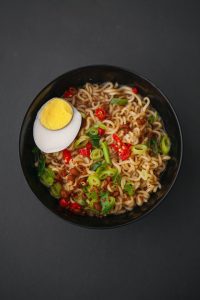
when is the best time to eat konjac root
Culinary Uses and Benefits
Konjac jelly's unique texture and neutral taste make it a versatile ingredient in various dishes. Here are a few culinary uses and benefits of konjac jelly:
- Desserts: Konjac jelly can be used as a primary ingredient in creating low-calorie, gelatinous desserts. It can be flavoured with fruit extracts or combined with other sweeteners to enhance the taste.
- Noodles: Konjac jelly can be transformed into translucent noodles, often referred to as shirataki noodles. These noodles are popular among individuals following low-carb or gluten-free diets.
- Health Benefits: Due to its high fibre content, konjac jelly may aid in weight management by promoting a feeling of fullness and reducing overall calorie intake. Additionally, the soluble fibre present in konjac jelly can help regulate blood sugar levels and support heart health.
In conclusion, konjac jelly is a unique food product derived from the konjac plant's corm. The production process involves harvesting, drying, grinding, mixing, filtering, gelling, cooling, and packaging. With its low-calorie content, high fibre content, and versatility in culinary applications, konjac jelly offers a healthy and enjoyable option for individuals seeking a wholesome alternative in their diet.
Want to learn more about how Konjac can help you on the keto diet? Read our keto tips, keto foods articles on our own keto blog here.

can you take konjac jelly at any time
How do you Make Konjac Jelly? - A Comprehensive Guide
If you're a fan of unique and healthy desserts, then konjac jelly might just be the perfect treat for you. Konjac jelly is a delicious and refreshing jelly made from the konjac plant, which is native to Asia. It has gained popularity in recent years due to its low-calorie content and various health benefits. In this comprehensive guide, we will walk you through the process of making konjac jelly at home, step by step, so you can enjoy this delightful treat whenever you crave it.
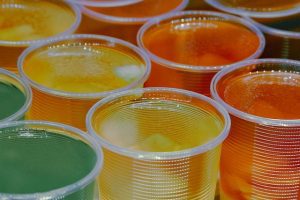
is konjac root the same as konjac flour
How do you Make Konjac Jelly?
Making konjac jelly is a simple and straightforward process. To make your own konjac jelly, follow these easy steps:
Step 1: Gather the Ingredients
To make konjac jelly, you will need the following ingredients:
- Konjac powder
- Water
- Sweetener (e.g., sugar, honey, or artificial sweetener)
- Flavourings (e.g., fruit juice, extracts, or essences)
- Optional: Fresh fruit pieces or toppings of your choice
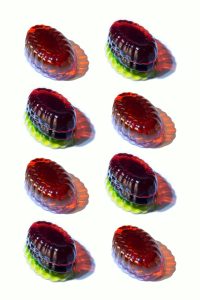
what is the best time to eat konjac jelly
Step 2: Prepare the Konjac Powder
In a bowl, combine the konjac powder with water. The ratio of konjac powder to water is typically 1:6. Stir the mixture well until the konjac powder is fully dissolved.
Step 3: Cook the Mixture
Transfer the konjac powder mixture to a saucepan and heat it over medium heat. Stir the mixture constantly to prevent lumps from forming. Continue heating and stirring until the mixture thickens and comes to a gentle boil.
Step 4: Add Sweetener and Flavourings
Once the mixture has thickened, reduce the heat to low and add your preferred keto sweetener and flavourings. The amount of sweetener and flavourings will depend on your personal taste preferences. Stir well to ensure that the sweetener is fully dissolved and the flavours are evenly distributed.

why take konjac root
Step 5: Pour into Moulds
Carefully pour the konjac jelly mixture into individual moulds or a large mould, depending on your preference. If you're using fresh fruit pieces or toppings, you can place them in the moulds before pouring the mixture.
Step 6: Chill and Set
Place the moulds in the refrigerator and let the konjac jelly chill and set for at least 2-3 hours, or until firm. The chilling time may vary depending on the size and shape of your moulds.
Step 7: Enjoy!
Once the konjac jelly has set, remove it from the moulds and serve it chilled. You can enjoy it as is or with additional toppings of your choice. It's a perfect dessert for hot summer days or whenever you need a guilt-free treat.
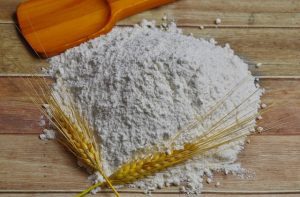
Frequently Asked Questions (FAQs)
Welcome to the Frequently Asked Questions (FAQs) section for Konjac Jelly. If you're curious about this popular food product, you've come to the right place. Konjac Jelly, made from the root of the konjac plant, is a gelatinous and translucent snack that has gained popularity due to its unique texture and health benefits. In this section, we'll address some common queries about Konjac Jelly, including its ingredients, nutritional value, flavours, and more. Read on to satisfy your curiosity and learn more about this delightful treat.
Can I eat konjac jelly every day?
Yes, you can eat konjac jelly every day. It is a low-calorie and nutritious food option that can be incorporated into your daily diet. However, it's essential to consume it in moderation and maintain a balanced diet overall.
Can konjac jelly help with weight loss?
Konjac jelly is often recommended as a weight-loss aid due to its low-calorie content and high fibre content. It can promote a feeling of fullness and help control cravings, making it easier to adhere to a calorie deficit for weight loss. However, it's important to remember that konjac jelly should be part of a comprehensive weight-loss plan that includes a balanced diet and regular exercise.
Are there any side effects of consuming konjac jelly?
Konjac jelly is generally considered safe for consumption. However, some individuals may experience digestive issues such as bloating or gas due to its high fibre content. It is recommended to start with small amounts and gradually increase your intake to allow your body to adjust.
Can konjac jelly be consumed by individuals with dietary restrictions?
Yes, konjac jelly is suitable for individuals with dietary restrictions, including those following a vegetarian, vegan, or gluten-free diet. It is naturally gluten-free and does not contain any animal-derived ingredients.
Can konjac jelly be consumed by individuals with diabetes?
Konjac jelly is a low-glycaemic food, meaning it has a minimal impact on blood sugar levels. This makes it a suitable option for individuals with diabetes. However, it's always best to consult with a healthcare professional or registered dietitian before making any dietary changes.

what can you make with konjac root (2)
Where can I purchase konjac jelly?
Konjac jelly is available in many health food stores, Asian grocery stores, and online retailers. It is essential to choose reputable brands and ensure the product is of high quality.
Conclusion
Knowing when to eat konjac jelly can help you maximize its nutritional benefits and support your overall well-being. Whether you incorporate it into your breakfast, pre- or post-workout routine, or as a healthy snack throughout the day, konjac jelly offers a low-calorie and nutritious option for those looking to maintain a balanced diet. Remember to listen to your body's needs and enjoy konjac jelly as part of a varied and healthy lifestyle.
Amazon and the Amazon logo are trademarks of Amazon.com, Inc, or its affiliates.






